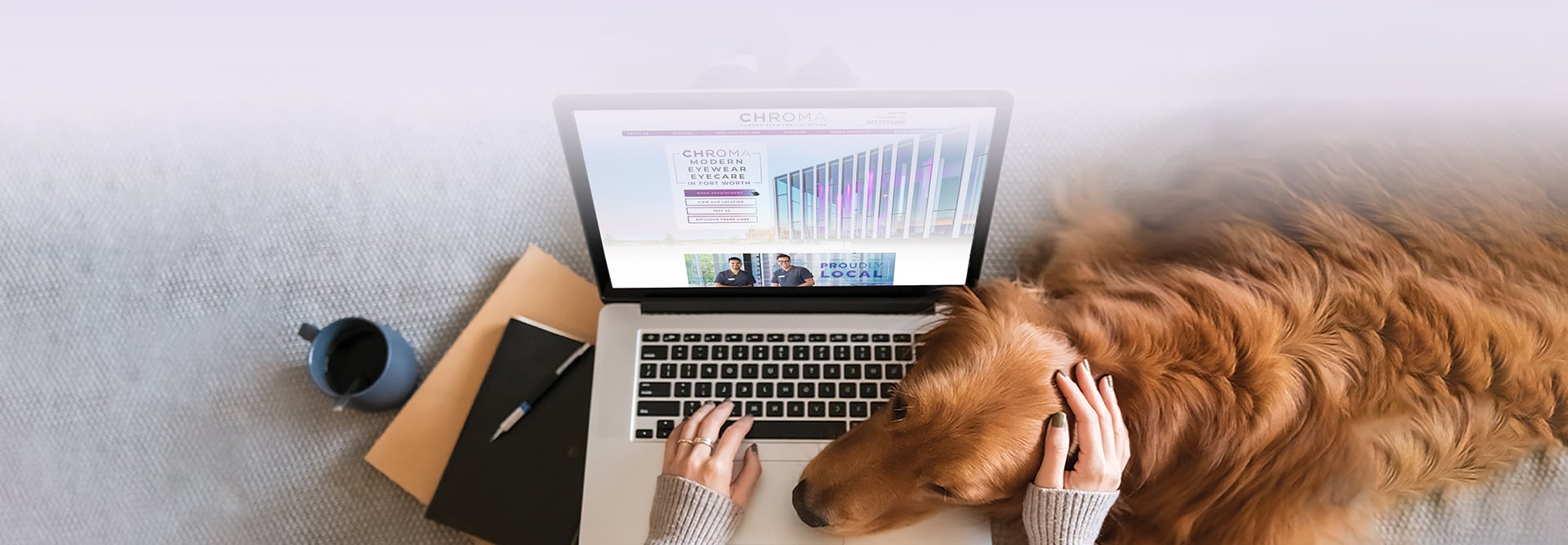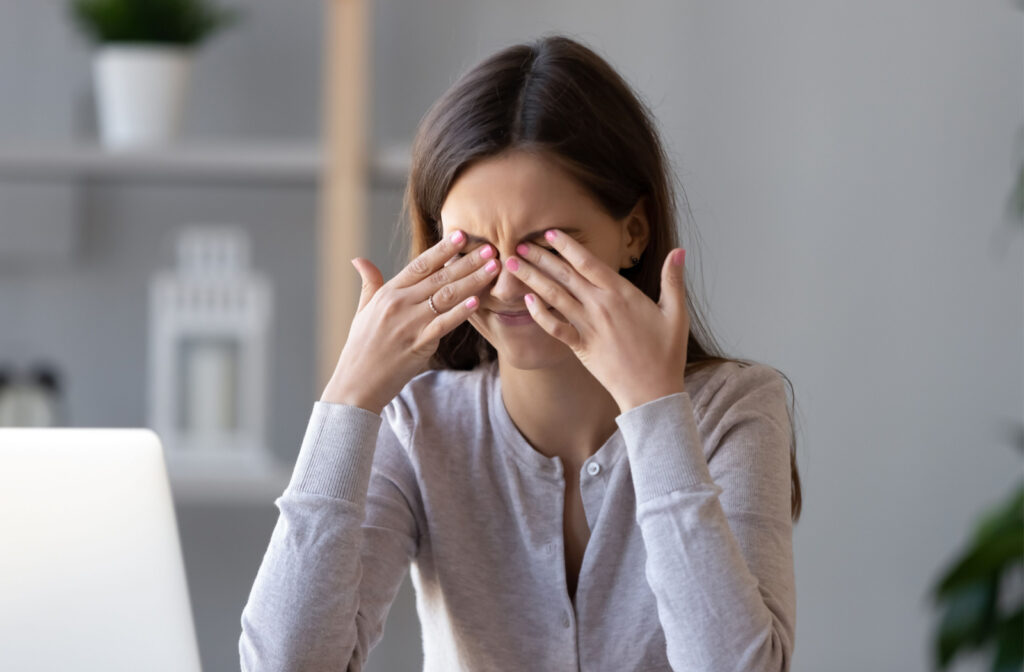Dry eyes can cause a host of uncomfortable symptoms ranging from irritated eyes to feeling like there is something in them or excessive tearing, which is the body’s response to your dry eyes.
The connection between dry eyes and headaches isn’t as clear as some of these other symptoms. Some scientific evidence points to a link between migraine severity and dry eyes being more common in those who get headaches regularly.
Whether you’re experiencing headaches with your dry eyes or looking for relief from other irritating symptoms, the right treatment for you ultimately depends on the root cause of your symptoms.
An optometrist can usually make a good recommendation on which treatment plan should be the most effective following an eye exam. Fortunately, there are typically several treatment options available for most forms of dry eye, some of which can be performed at home.
What Is Dry Eye?
Dry eye disease, often simply called dry eye, is a common condition that affects millions of Americans. It boils down to a lack of lubrication from the eye’s tear film. The best-case scenario with dry eye is that you may experience some slight discomfort. But untreated and severe dry eye can lead to vision problems or an increased risk of infection in more extreme cases.
Symptoms of Dry Eye
The symptoms of dry eye will vary from person to person and may be different based on the severity of the condition. But some common symptoms of dry eye include:
- Stinging or burning feeling
- Irritated or gritty feeling, like there’s a foreign object in the eye
- Stringy mucus in and around the eye
- Red eyes
- Discomfort while wearing contact lenses
- Blurry vision
- Excessive watering of the eyes—although it seems counterintuitive, this can be your body’s way overcompensating for the lack of moisture
Can Dry Eye Cause Headaches?
There isn’t enough evidence to definitively say that dry eye causes headaches, however, 1 study found that up to 51% of people who experienced migraines also had dry eye disease. The results of another study suggested that those who experienced migraines had longer and more severe headaches with dry eyes.
None of this is conclusive evidence that dry eye causes headaches, but there does appear to be a link between the 2 conditions.
Types of Dry Eye
There are 2 primary types of dry: aqueous deficient dry eye (ADDE) and evaporative dry eye (EDE). Each shares similar symptoms, but they are separated by their root causes.
Aqueous Deficient Dry Eye
Aqueous-deficient dry eye (ADDE) happens when your eye does not make enough tears to maintain a healthy tear film. Sjögren’s disease is a common cause of ADDE. Things like hormone replacement therapy, other autoimmune disorders, certain medications, or simply not blinking enough could also be risk factors in non-Sjögren’s-related ADDE.
Evaporative Dry Eye
Evaporative dry eye (EDE) has little to do with the amount of tear production. Instead, it’s the quality of tears that’s the issue. An imbalance of water, oil, and proteins causes the tear film to evaporate prematurely.
Meibomian gland dysfunction (MGD) can be a key contributor to EDE. Vitamin deficiency, eye allergies, skin conditions, and over-use of contact lenses can all contribute to an increased risk of MGD.

Dry Eye Treatment
Dry eye is often a chronic condition, but it can be managed. Treatment typically revolves around symptom relief.
Home Remedies
Home remedies for dry eye include:
- Avoiding triggers like dry air, dust, or smoke
- Warm compress
- Lubricating eye drops (it’s best to use additive-free eye drops for long-term treatment)
- Increase your intake of omega-3 fatty acids
In-Office & Prescription Treatments
The doctors at CHROMA are proud to offer several effective treatments for dry eye, they include:
- Prescription eye drops, Xiidra and RESTASIS
- Amniotic membrane treatment for severe cases of dry eye that include feeling like something is in the eye or light sensitivity
- Autologous serum drops, which are a treatment that uses sterile tears made from your blood plasma
- Punctal plugs, which can help prevent tears from draining too quickly from your eye
There isn’t a single “best” treatment for dry eye, so your eye doctor can review your options and recommend an effective treatment plan.
Find Relief from Your Dry Eye Symptoms
At CHROMA, we understand that although dry eyes may not immediately pose a serious threat to your vision, the symptoms are downright uncomfortable and can cause disturbances to your daily life. An eye exam will typically point our doctors towards the source of your dry eye, which enables us to offer several effective treatments to relieve your symptoms.
Contact us today at CHROMA modern Eyewear Eyecare to schedule an appointment. We’re happy to answer your questions and get you in to see one of our experienced eye doctors. Simply call, text, or book online and our friendly staff will find an available time that is convenient for you.



